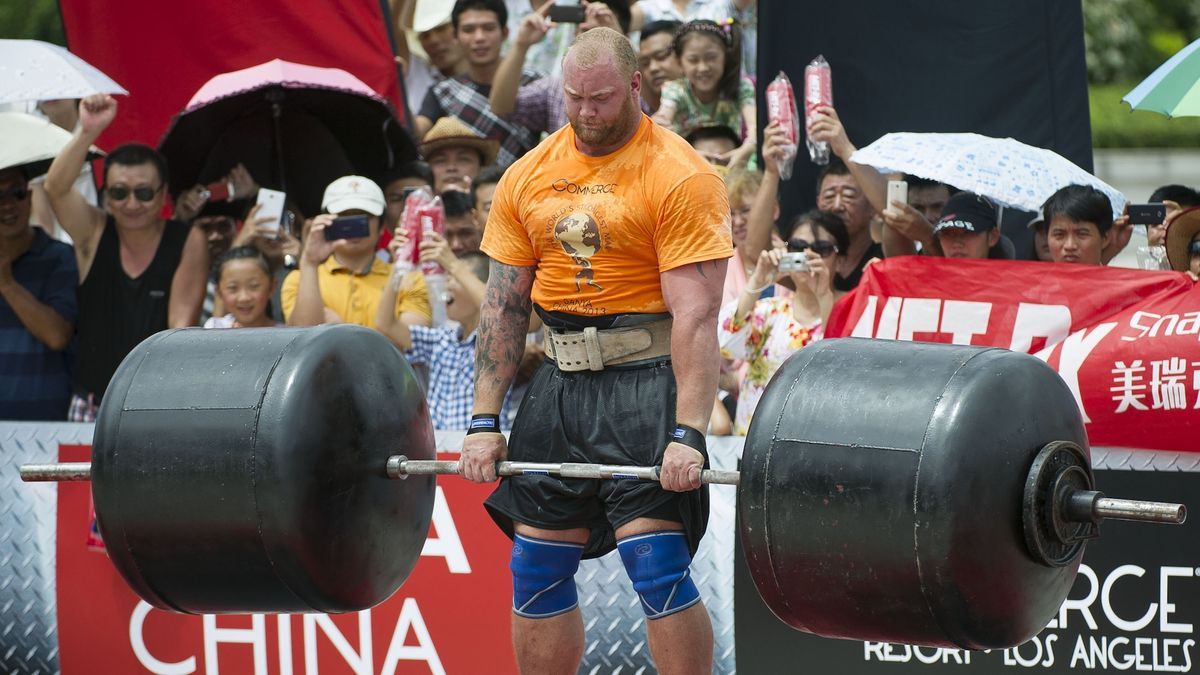The world was in awe when British strongman Eddie Hall deadlifted 1,102 pounds (500 kilograms) at the World Deadlift Championships in 2016. Hall was the first person to break the half-ton barrier — and then, in 2020, Icelandic strongman Hafþór Júlíus Björnsson took it up a notch by deadlifting 1,104.5 pounds (501 kg).
Meanwhile, the record for heaviest weight ever lifted by a human belongs to Canadian strongman Gregg Ernst, who in 1993 backlifted two cars with drivers that together totalled 5,340 pounds (2,422 kg).
These mind-blowing feats of strength raise a question: What is the heaviest weight possible for a person to lift?
Experts told Live Science that it’s likely athletes are still operating below their muscles’ maximum capacities, and it’s unclear what the limit of human strength could be. But that said, it’s difficult to measure a given person’s maximum muscle capacity.
Related: Which Olympic sport burns the most calories?
Bradley Schoenfeld, a professor of exercise science at Lehman College, said that muscle strength can be measured using an electromyography (EMG) machine. EMG works by recording the electrical activity generated within a muscle, both by nerve cells and by contracting muscle fibers. Such tests can only be performed in the lab, and the EMG only monitors a localized set of muscles, so it can’t assess a person’s body-wide muscle capacity.
“It’s hard to define that limit,” said E. Todd Schroeder, a professor of clinical physical therapy at the University of Southern California who studies how strength and muscle mass can be increased in older adults. The only way to really determine your muscle capacity is through continuous training — by establishing new personal records and then seeing if you can break them, he told Live Science.
“If someone says, ‘Oh, I can lift 200 kilos [441 lbs],’ I’m like, that’s great, but I know you can lift more,” he said anecdotally. “We just don’t know how much more.”
Physically, a person’s capacity to bear weight depends on actin and myosin, the two proteins that enable muscles to contract. These proteins are arranged within different types of muscle fibers, including “fast-twitch” and “slow-twitch.” A person’s muscle mass and ratio of these fibers depends on their training regimen, as well as biological factors like genetics and sex. In general, the greater your muscle mass, the more force you can generate.
Elite powerlifters push themselves to the limits by continuously increasing their muscle mass — however, the return on force diminishes as muscle mass grows ever larger, and eventually, the muscles reach their limit.
And sometimes, simply accumulating muscle mass is not enough, Schroeder told Live Science. Paradoxically, sometimes people with less body mass lift more weight than people with more.
One factor powerlifters must overcome is “neuromuscular inhibition,” which puts a cap on the force with which a muscle can contract, to help prevent injury. Studies find this cap can be raised with resistance training.
Related: What’s the most dangerous sport in the world?
Another part of the puzzle is that, in addition to physical training, powerlifters must push past mental blocks to lift heavier and heavier weights, Schroeder said. The best weightlifters are those who can upend these inhibitions and get themselves in the right mental state to recruit all their muscle fibers, he said.
“If I tried to lift the maximum force that I could, say 200 pounds [90 kg], and then I am able to go into a state where I remove that neural inhibition, I might be able to lift 300 pounds [136 kg],” Schroeder said, as an example.
This effect was demonstrated in a 2020 study published in the journal Impulse. The researchers tried to determine whether positive visualization — a technique that involves mentally rehearsing positive outcomes — impacted strength training. They recruited 133 student athletes at a university and divided them into two groups. The first was asked to envision themselves lifting 110% of their lift capacity for at least five minutes a day while listening to motivational music. The second group did not do this.
After three weeks, the athletes returned to the lab. Those who had practiced positive visualization each increased their lift capacity by at least 10 to 15 pounds (4.5 to 6.8 kg), while those in the comparison group averaged only a 5-pound (2.2 kg) increase.
“To a certain extent, you can lift a lot more than you think if you have the right mindset,” Schoenfeld said.
“It always seems that someone can be a little bit stronger and perform a little bit better,” he said. In the weightlifting world, this manifests in athletes who repeatedly break their own records at competition. “I try not to be surprised,” Schroeder said of these repeat record-breaking achievements.
Ever wonder why some people build muscle more easily than others or why freckles come out in the sun? Send us your questions about how the human body works to community@livescience.com with the subject line “Health Desk Q,” and you may see your question answered on the website!











/https://tf-cmsv2-smithsonianmag-media.s3.amazonaws.com/filer_public/34/31/3431771d-41e2-4f97-aed2-c5f1df5295da/gettyimages-1441066266_web.jpg)







Discussion about this post